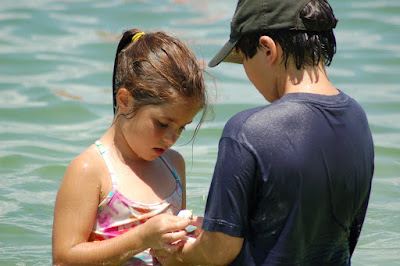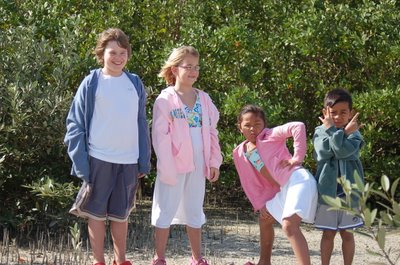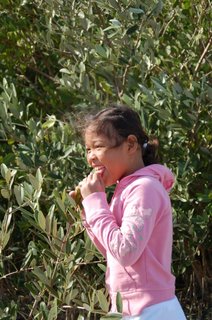
“Hey Miss, what’s this? Doc Bruce, let me see that thing. Oooh, what is that?” That’s the excited cacophony of the girls from Pace as they wade in the water off Bailey Beach. Sanibel Sea School and the Pace Center for Girls in Fort Myers hit the beach last week for a day of exploration and learning. Pace Center for Girls provides at-risk teenage girls with the structure of a supportive education and counseling program that focuses on helping them to succeed in life. Sanibel Sea School and Pace have teamed together before and are enjoying the mutual learning that is so very gratifying about joint programs such as this. Thanks to a grant from the Southwest Florida Community Foundation, Sanibel Sea School has been able to take Pace girls into the field as part of the “Fieldtrips for Every Child Program.”
This particular day, Doc Bruce and Pace science instructor Michelle Patterson led the girls through a program about man’s impact on the environment. Unfortunately for the ocean, it was a good day for the lesson, as the girls walked along the closed Bowman’s Beach and talked about the complexity of water quality issues. But one can’t fully appreciate a beach closure until you’ve had a chance to enjoy all that can be found in the near shore water. So the group ventured up to Bailey Beach and enjoyed seining for small fish. Then the girls happened across a shell bonanza in a small depression in the sand, reminding us of the element of discovery that distinguishes a fieldtrip from an outdoor lecture. Finding unexpectedly empty almost polished whelks and shark eyes to take home to sisters and moms, the girls were wide-eyed and eager.

In these moments we are reminded of how lucky we are to be custodians of this ocean environment. There is no lecture that can explain the wonder of a marine creature as well as the experience of finding it. And perhaps there is no way to truly value the ocean without ever exploring it. One day, very soon, these girls will be old enough to make a difference in environmental issues with their voice and their vote. We hope they choose to do so. And until then, they are making a difference in our lives with their joy and their whoops of surprise.
This particular day, Doc Bruce and Pace science instructor Michelle Patterson led the girls through a program about man’s impact on the environment. Unfortunately for the ocean, it was a good day for the lesson, as the girls walked along the closed Bowman’s Beach and talked about the complexity of water quality issues. But one can’t fully appreciate a beach closure until you’ve had a chance to enjoy all that can be found in the near shore water. So the group ventured up to Bailey Beach and enjoyed seining for small fish. Then the girls happened across a shell bonanza in a small depression in the sand, reminding us of the element of discovery that distinguishes a fieldtrip from an outdoor lecture. Finding unexpectedly empty almost polished whelks and shark eyes to take home to sisters and moms, the girls were wide-eyed and eager.

In these moments we are reminded of how lucky we are to be custodians of this ocean environment. There is no lecture that can explain the wonder of a marine creature as well as the experience of finding it. And perhaps there is no way to truly value the ocean without ever exploring it. One day, very soon, these girls will be old enough to make a difference in environmental issues with their voice and their vote. We hope they choose to do so. And until then, they are making a difference in our lives with their joy and their whoops of surprise.



















 Then back to Sanibel Sea School for some serious art as we continue to talk about estuaries and the amounts of salt in estuary waters.
Then back to Sanibel Sea School for some serious art as we continue to talk about estuaries and the amounts of salt in estuary waters. And, what lunch would be complete without visiting the corn snake, Pepper? We all enjoy a chance to feel his smooth, cool skin. There is just something about a snake that kids (and most of us adults) just can't resist.
And, what lunch would be complete without visiting the corn snake, Pepper? We all enjoy a chance to feel his smooth, cool skin. There is just something about a snake that kids (and most of us adults) just can't resist.



 Mangrove forests are integral parts of the marine ecosystem. In some partrs of the world, they are called forests of mud. Here we pay homage to the spirits of the mud forest, or at least we appear to as we listen for the sounds of the mud flats.
Mangrove forests are integral parts of the marine ecosystem. In some partrs of the world, they are called forests of mud. Here we pay homage to the spirits of the mud forest, or at least we appear to as we listen for the sounds of the mud flats.







